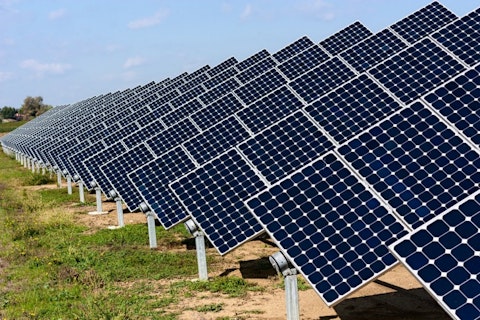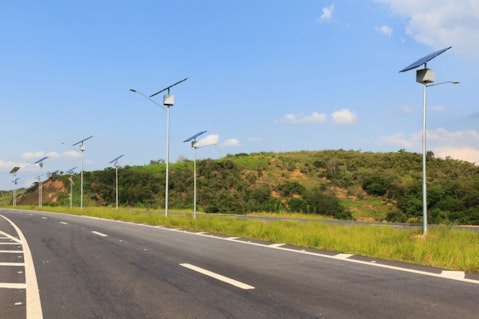In this article we wondered: solar roadways and solar road panels: debunked/busted or a great idea? You can call it global warming or climate change, but as Shakespeare once said, “a rose by any other name would smell as sweet,” and a problem by any other name would remain as potent. Now that scientists worldwide have united in claiming that climate change could threaten our very existence, research and efforts are being directed to combat this problem.
Renewable energy has been heralded as the breakthrough that will change the world for the better. Not only does renewable never run out, but also its production is clean, as compared to the existing energy sources, namely fossil fuels. In fact, fossil fuels have been one of the leading reasons for climate change. On the other hand, solar power, one of the most popular forms of renewable energy, has been heralded as potentially game changing. However, is it really that amazing?

Copyright: lassedesignen / 123RF Stock Photo
First of all, solar energy obviously cannot be generated for a full 24 hours and is only produced in the presence of daylight. Furthermore, it is limited in places which are prone to cloudy weather, as that hampers the access to sunlight. In order to make the maximum use of sunlight, the solar panels need to be placed at optimal angles. Thus, fixed solar panels result in inefficiencies; the sun changes its position throughout the year while the panels remain fixed, thereby changing the angle. While solar panels use the sun, which of course is free, the initial cost of solar panels is extremely expensive.
Despite these limitations, there are several successful applications of solar panels, namely to power homes. Germany, for example, uses renewable energy to generate 22 percent of power, of which around a quarter is provided by solar power. It is safe to say that Germany is considered to be the pioneer and leading country in solar panel research. Hence, it is unsurprising to see it feature in the number one spot in the 8 Countries that Produce the Most Solar Energy.
Now, the latest idea in respect of solar power is creating solar road panels and solar roadways. The idea is quite simple: the solar roadways provide an alternative to traditional asphalt and generate energy which will power the cars. And while the idea is quite simple, the technique to execute is anything but.
Is it even practical to pave hundreds or thousands of kilometers of road with solar panels? Is it a financially sound investment? Do the benefits outweigh the disadvantages of this idea? Most of all, is it even practical? We seek to answer all these questions and confirm whether solar roadways and solar road panels: debunked/busted or a great idea.
The history of this idea
The Brusaws, who reside in the United States, are credited with coming up with this idea, according to Speigel. They came up with the idea in 2006 when climate change was just starting to be accepted globally. They continued to work on the project and made significant inroads, enough to be awarded a $750,000 grant to fund this project by the government. Small demonstrations, such as in parking lots, have been made in recent years. However, while some inroads have been made, pardon the pun, how do you even pull off such a project?

Barnaby Chambers/Shutterstock.com
The science behind the project
The solar panels are glass covered and heated, which is done to ensure that snow and ice do not accumulate in wintery conditions. Meanwhile, LED lights are also installed which showcase the road lines while also showing messages, such as warnings or information relevant to traffic. The solar panels are connected to the LED lights and power them as well.

ermess/Shutterstock.com
Can the project be implemented?
I am sure no one has been denying that it is a novel idea but can it actually work? Well, the short answer is yes. The Brusaws have already proved this on a short scale, by converting a parking lot into a solar panel powered parking lot. A solar bike path was created in the Netherlands a couple of years ago and is functioning perfectly. We already possess the technology to implement this idea. There is no reason to prevent this application on a large scale. However, is this really feasible?

foxbat/Shutterstock.com
Feasibility of the project
Now, this is where it gets interesting. Contrasting opinions pertaining to the implementation of the project have been presented, with most being against. According to a professor of urban planning at the University of Michigan, Jonathan Levine, it is not a feasible project, mainly due to the bureaucratic approach of the government, with the local, state and federal authorities all needing to be involved in the implementation of new road technology.
However, the main issue is the cost, which is astronomical, to say the least. Sebastian Anthony, a writer for ExtremeTech, completely derided the idea of the national road system being overhauled and replaced by solar road panels. They estimated the cost at an astounding $56 trillion. This figure was arrived at by using the cost provided by the Brusaws where a 12×12 foot section costs around $10,000. To put that in perspective, the United State’s GDP is a paltry 17.9 trillion.
Hence, there is little chance that this technology will be implemented unless the costs are reduced dramatically. And it is important to consider that there is little doubt that costs will fall as further technological advancements are made. After all, a 16 MB memory card cost over $350 a couple of decades ago. Now, a 4 GB RAM will set you back just over $5. That is a decrease of 99.75 percent in the price, proving my point that cost cutting is almost guaranteed as innovation in technology continues, which may just be the push needed to make this idea a reality.
The main reason behind the heavy costs is the fact that the solar cells have to be manufactured by hand. Once again, this is technology still in relative infancy. Once breakthroughs are made and the solar cells are manufactured by machines, large-scale implementation will be significantly more feasible.
Some other issues include the cars blocking the solar panels on the road from accessing the sunlight, thereby reducing efficiency in the creation of energy, which will already be hampered due to the solar panels being fixed and not adjustable.
The funny thing is, while solar road panels are being pursued primarily because they are an environmentally friendly alternative to produce energy, it is thought that they could actually have a negative impact on the environment. High costs are being incurred in this project, which could be utilized for other more viable projects. In addition, in the case of a solar bike path in the Netherlands, the epoxy top coating layer and the reinforced concrete slabs will create a detrimental effect on the environment, while the electricity produced will be quite low in contrast. Hence, the overall impact on the environment may also raise concerns that this technology is not viable and other alternatives may be considered in its place, such as using coils on the road to power electric cars via vibrations, which are then converted into electric energy.
Safety is another important factor that is still not guaranteed with solar roads. Not only do the panels have to be strong enough to bear the weight of the cars and heavy traffic, the material with which the panels will be covered should provide significant traction to cars which will otherwise simply slide over the roads, causing massive traffic accidents.
The supply of material proves to be another dilemma as large circuit boards are required to be placed on the roads, the acquisition of which has proven to be difficult, mainly because most companies have reduced the size of circuit boards. Hence, the myth of solar road panels and solar roadways may have been busted rather than be considered a great idea.

Copyright: jantroyka / 123RF Stock Photo
Current applications of solar road panels
As mentioned earlier, this technology has been applied to parking lots. In addition, such a solar path has been created, on a very limited scale, in the Netherlands, for bikers. While the path is only 72 feet long, it is still heralded as a significant achievement in this field. The developers believe that in the future, electric cars could be powered directly by the road they travel on.
The company owned by the Bursaws, Solar Roadways, is planning to implement its technology on the famous Route 66, converting a small part of it into a solar roadway. If the project is successful, the scope of the project will be increased.
Conclusion
So is the concept of solar roadways and solar road panels: debunked/busted or a great idea? Considering current technology and its limitation, I would have to go with the former. Right now, solar roadways are just a dream that does not have a significant practical application, considering a cost-benefit analysis of the project. However, I can easily envision a future, possibly only a few years down the road, where the world has figured out how to make this technology more effective and beneficial, and therefore a future where the road is paved with solar panels rather than the traditional asphalt.

Copyright: phillipminnis / 123RF Stock Photo




